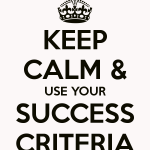How management and staff communicate with one another plays a crucial role in employee morale, office atmosphere, and resulting quality of work done. Good communication among all levels within an organization leads to increased productivity, trust, confidence, and strong working relationships.

For that reason, paying attention to communications as part of a project is very important. Change communication on a project can enhance the positives and a lack of it can add to stresses already there. But, communication done on a project is very different.
For that reason, paying attention to communications as part of a project is very important. Change communication on a project can enhance the positives and a lack of it can add to stresses already there. But, communication done on a project is very different.
Companies implement changes through projects. This however also means that things are also constantly changing within the project. Using your regular communication approach may not be adequate.
Below you will find four secrets (and some freebies) to having a great communication plan on your next project.
Add Media Channels
To start, you’ll need more ways to get your messages out and engage your audiences. Using only your company’s current media channels won’t be enough.
Plus, with regular company communications, you’re covering all areas of your organization, and not focusing specifically on the project at hand. That means that routine company updates can bury important and urgent messages from your project.
Therefore, as part of change communication on your project you need to add new channels of communication. Check out this infographic which lists several other communication vehicles you can use.
Develop a ‘Change’ Communication Plan
Next, you’ll need to have a communications plan specifically for your change project, separate from your company wide communication plan. This plan needs to take into account your audiences, what messages are relevant to them, and how you are going to incorporate a feedback loop to ensure your message has hit the mark.
Setting up a communication plan is relatively simple (you can use an Excel spreadsheet), but you’ll need to have key elements to make sure it’s thorough and complete. This infographic lists the various elements you need to have.
Schedule Your Comms: Timing is Everything

Your communication activities need to support other project activities going on. If your project is going to result in systems being down for a period of time, there need to be communications supporting that.
People need to know how to prepare and what to do during the shutdown. People also need to know when to start training courses, when to attend project and educational events, and so on.
And always make sure you have your cascade built in so that right people get the appropriate messages in the correct order.
Keep Your Plan Flexible
An old skit on Saturday Night Live was a spoof of a commercial for whipped cream in a can. It was a product that could be used to add flavour to desserts, but, it could also be used for cleaning floors! That crazy multipurpose made the product and skit hilarious.
Your communication plan has to do something similar, but on a more serious note. It has to be structured, so that people understand what will be communicated, and when. At the same time you have to make sure that it’s not too rigid so that it can’t be modified to meet urgent messaging needs.

When it comes to a project, there are going to be revisions and changes, additions or removals of activities, among other things. Therefore, make sure your change communication plan is both structured and flexible so you can improvise effectively with little notice.
See you next time!
Like this blog? Share it with your colleagues. And sign up so you won’t miss another one!
Photo by Curtis MacNewton on Unsplash
Photo by Ana Azevedo on Unsplash











